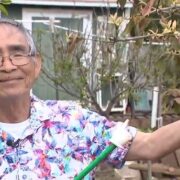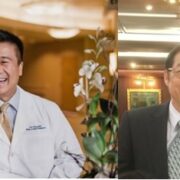Homeless Taiwanese Finally Have Their Own Home
Author: Hung-ni Wang
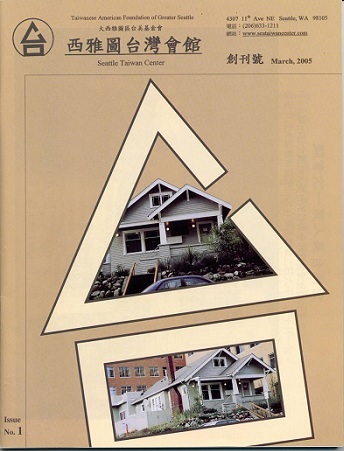
When entering the Taiwan Center, many people are involuntarily attracted by everything that comes into their line of sight: the simple and elegant living room decorated with early Taiwanese artifacts, the impressive collection of Chinese books, the hallway separating the library and offices, and the bright windows of the kitchen and bathroom. At the end of the gallery there is a large event hall, equipped with a projector screen, a karaoke machine, fully equipped ping pong tables, and the tables and chairs for buffets and banquets are stored in the corners. Additionally, the second floor has a meeting room and open-air balcony. All this to say, this is a wonderful location, described by the Chinese idiom, “a sparrow may be small, but it has all five organs!” (Meaning: Though a place may be small, it has everything it needs.)
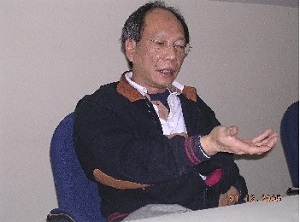
This is the manifestation of two couples’ long-time dream, to give Taiwanese their own place! Cheng-nan Lin, one of the previously mentioned people, recalls the origins of the Taiwan Center: in 1994 a Taiwanese community center was established, but it was not heavily utilized. After a little over a year of operations, they began to look to a new place “We talked about a Taiwan Center for 10 years, this year we have to make it happen!” From time to time you could see a look of perseverance in Cheng-nan Lin’s eyes. In April of 2003, these two couples, Shao-chi Chen and Clara Chen, and Cheng-nan Lin and Chun-mei Chen pooled their funds to purchase a location for the Taiwan Center.
Last year, Mr. Martin Tsai came to visit in the summer; when he saw the dilapidated state of the building, he felt doubtful. Was it really possible to remodel this into a beautiful house? Truly, it can be difficult for people without personal experience to see the whole picture… the before-and-after pictures below help show the difference after remodeling.

Living room under construction
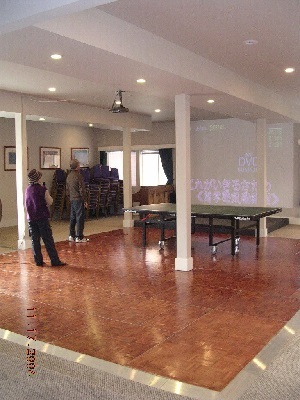
Living room after remodeling

Basement student dormitory living room (Before)
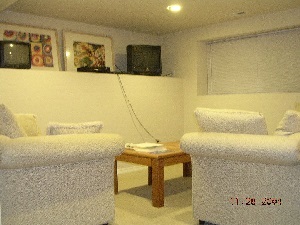
Basement student dormitory living room (After)
To take the building from “old and dilapidated” to “splendid and beautiful,” co-owner of the Center Chun-mei Chen personally designed and constructed the project, without relying on anyone else. The extreme effort invested over this period is the best representation the past 30 years she’s spent in America after immigrating with her husband Cheng-nan Lin: Both of them graduated from their study abroad programs, coming and struggling in a foreign country. They had tried working in a number of different fields, before finally laying foundations in the real estate management industry. Thus, the purchase and reconstruction of the Taiwan Center utilized this couple’s full set of skills!
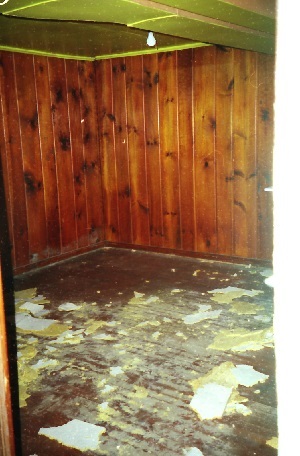
Student dormitory (Before)

Student dormitory (After)

“Essentially, our guiding principle was to save as much money as possible: if you can make the materials yourself using simple methods, see if you can use it.” Though the building is small, once decorated it is unambiguously beautiful. To detail the construction process for the Center’s guests: the living room is structurally unchanged, just slightly decorated and furnished to be used to hold gatherings or to be used as a reading room; what was originally a bedroom was converted into an office, which is separated into two spaces by a walkway; the kitchen was altered to have a single entrance, and the originally passage on the other side has been sealed into a full wall, which is a great space for a bookcase. The design and planning for this space, which looks natural but is quite innovative, truly makes you admire Chun-mei’s ingeniousness!
This was such a complicated and arduous project, so I asked Chun-mei what the most difficult part of it was. “The most difficult part was probably the basement bathroom, which needed trenches to be dug for the drainage pipes; when I was digging, I felt a little nervous and unsure that I could do the job well.” Nonetheless, Chun-mei, whose veins are filled with sheer perseverance, relied on the Taiwanese spirit of coming up from nothing and passing over ever obstacle. As the director of the Center, Clara described her: “Chun-mei did everything, without sleeping or resting!”
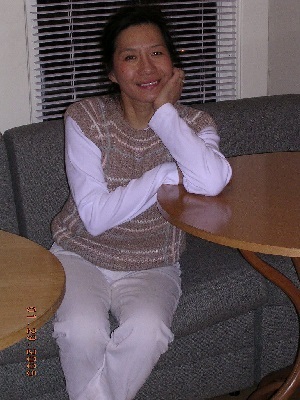
“This is also Cheng-nan and Clara’s dream: Taiwanese people must have their own place! I did this all to help them achieve their goals!” Chun-mei said modestly. The completion of the Seattle Taiwan Center’s building is a symbol of the wisdom of Taiwanese women.
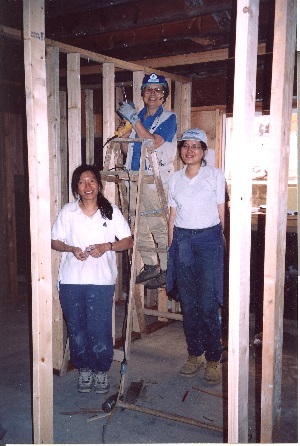
The Taiwan Center property transferal procedure was completed on April 30th, 2003. It’s all thanks to the hard work of three Taiwanese women, Clara Chen, Chun-mei Chen, Zhuo-fen Li, and many professionals who volunteered to help. After nearly a year of construction — which included the expansion of the event hall, the reconstruction of the kitchen, meeting room, library, reading room, offices, classrooms, and balcony, and after passing multiple security checks and inspections — we were able to transform this 80 year old “sparrow” building into a beautiful and legal “phoenix” building.
The Chen and Lin couples selflessly provided this nearly 5,000 square foot house, located in the center of the business district in the UW neighborhood, a place where land is in high demand. The building is only four blocks down from UW. The first and second floors are leased to the Greater Seattle Taiwanese American Foundation for the symbolic rental price of $1 a year and is used as the Seattle Taiwan Center. The basement level has been renovated as a living space for students to rent, the revenue from which helps subsidize the home loans for the property.
Thanks to Cheng-nan Lin, Dr. Shao-chi Chen, and their wives, who organized, donated money, and volunteered their time, the Taiwan Center was finally born! The following year, on February 28th, 2004, the Taiwan Center officially opened for public use.
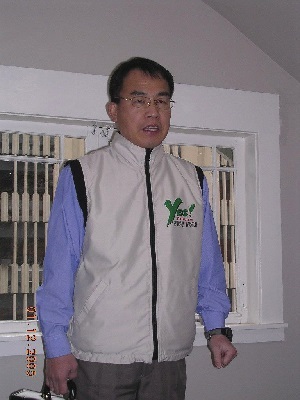
Next was the establishment of the Foundation: Mr. Sheng-hsiung Hsiao, as Chairman of the board, collaborated with enthusiastic professions to formulate the Greater Seattle Taiwanese American Foundation charter. The Taiwan Center also received its 501(c)(3) number, which meant that it was officially a federally-registered non-profit organization, operating within the legal structure.
Currently, the Foundation has 33 directors, under whom the Taiwan Center committee manage the Center’s operations. There is one Center Director (Clara Chen), two Assistant Directors (Su-chin Li, Agnes Hsiao), four staff members who rotate shifts (Hsing-chi Wu, Man-hui Chou, Wang Hung-ni, Chia-che Wu), and a very strong volunteer team. The Center has a website: seataiwancenter.org. Behind the establishment of the Taiwan Center was the mutual trust that Dr. Chen and Mr. Lin had in each other; among all of the enthusiastic overseas Taiwanese Americans, they are truly exemplary. If not for their strong and deep love for their home country of Taiwan, who else would be foolish enough to use their own money to buy a house for public use? Martin Tsai, who came to visit last year, said admiringly, “The fact that these two couples have been this passionate for more than 30 years is truly moving!”
Since the Taiwan Center was established, these two couples are seen there all the time: Chun-mei runs in and out, checking to see if there is anything that is missing or that needs fixing. If you want to play ping pong, find Dr. Shao-chi Chen, and you’ll never be disappointed. Director Clara is very happy to see many people coming and going from the Center. Aside from participating in the Center’s various activities, Cheng-nan Lin also helps clean up the trash: “It’s like throwing a party at my own home, it feels very warm!” He also frequently has to brainstorm how to get enough resources to subsidize the building’s usage: “The mortgage interest is offset by the rent that the students pay, and there are volunteers who sell glutinous rice dumplings to raise funds and a few donations. It’s just enough so that the Taiwan Center is able to get by!” Cheng-nan Lin said optimistically. Everyone’s life has become busy and enriched with learning how to spend less money and spend more effort in order to get things done for the Taiwan Center.
The experience of establishing the Seattle Taiwan Center can be used as an example for the establishment of other Taiwan Centers around the world. We also hope that cities throughout the whole world will have Taiwan Centers so they can continue to inherit the spirit of the Taiwanese people, so they can be like the Jews, helping their own country!
Excerpt from the Seattle Taiwan Center, First Issue/2005/03
Translated from 30. 西雅圖台灣會館 / 王虹妮 /2014/09


